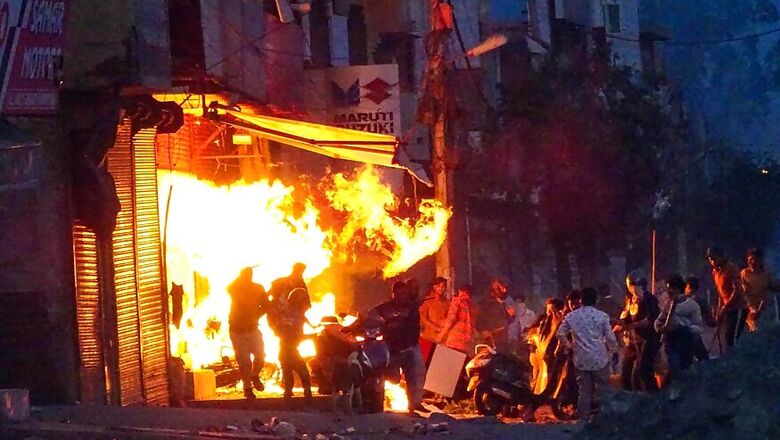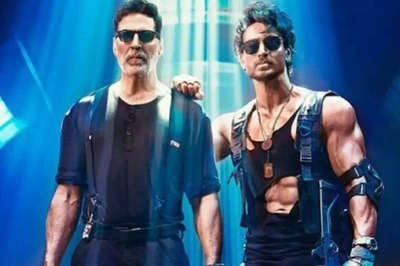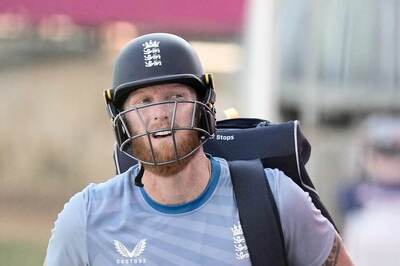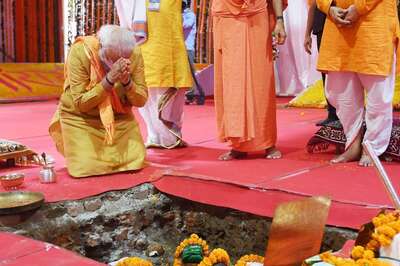
views
“I can’t breathe.”
These words by George Floyd have caused a furore of emotions all over the world because of the resurgence of racism in the United States. Minutes after the homicide of Floyd, hashtags like #Alllivesmatter and #blacklivesmatter flooded the social media accounts of all prominent celebrities, intellectuals as well as the common people who witnessed the televised image of Floyd being choked to death. This incident, however, reflects the hypocrisy and insincerity of those who raise their voice against injustice done to people outside India but remain largely unaffected when similar acts of murder and violence are unleashed on their own citizens, like the Dalits.
It is instructive to step away for a moment and ask the most legitimate question: where were these self-proclaimed liberals when Dalits were targeted and killed during the Delhi riots of February 2020? Why did people like Asaduddin Owaisi and self-proclaimed Dalit leader Chandrashekar Azad not utter a word against the violence they engineered, which led to the killings of Dalits during these riots? A good number of victims who suffered at the hands of Muslim mobs were from the Schedule Caste community.
The lynching of a Dalit
Vinod Kumar, a Scheduled Caste man, was lynched by a mob shouting ‘Allah-hu-Akbar’ in Brahmapuri street no.1 by a mob. His son Monu has survived. He was a DJ by profession. Possessed of a strong built and imposing personality, he was lovingly called Bhola Baba or Shiv Baba by his family and friends. On the night of February 24 around 10.30 pm, Vinod Kashyap and his son Monu stepped out of the house to buy medicines for the former’s grandson. Kalyan Medical store is barely a few metres away from their house. Though the area had been tense, there was no inkling of the lynching that was to follow. A stone hit Monu and the bike on which the father and son were riding slipped. Out of nowhere a crowd of 200 people with stones and shouting ‘Allah-hu-Akbar’ surrounded both of them.
The two were attacked repeatedly till Monu pretended to be dead and lost consciousness. Gory social media videos show a dead Vinod being dragged on the streets. Bhole Baba was lynched. A regular at the annual Kanwar festival in the holy month of Sawan, he was actually called Bhole baba by his community.
The marked assassination of a Dalit
Dinesh Kumar Khatik was another Scheduled Caste individual who was killed during the riots. He belonged to the extremely impoverished Khatik community engaged in meat processing. On February 24, he stepped out of his house to buy some food for his children, two sons aged 6 and 1½ years. On finding shops around closed the house, he went a little further to Shiv Nagar Puliya.
According to residents and family, he was shot from the roof of Rajdhani Public School at Shiv Vihar Puliya. Rajdhani Public School, owned by Faisal Farroque, was used as a base by rioting Muslim mobs in Shiv Vihar. Khatik was hit by a bullet on his forehead from a distance of about 300m. His family says this can only be the work of a sniper or sharpshooter.
Khatik owned a small inverter shop in Durgapuri. Life is a daily grind for this family. Khatik’s father has lost his mind after his young son’s death. Kusumlata, his wife, is an uneducated woman with a child feeding at her breast, she has no hopes for the future. The small irregular income that her husband brought in has stopped. Her elder son studies in LKG in a small neighbourhood school. She as an eye problem and cannot see properly. For her, the future is dark.
Jhuggis burnt
The poorest of them all, the Lohars who survive in Delhi by doing iron work and have their ‘jhuggis’ on the sidewalks and lanes, suffered losses during the riots. They are the poorest of the poor with the really well-to-do amongst them having one or two goats as livestock. The Lohars of North East Delhi lost it all, barely fleeing with their lives.
With these incidents in mind, one must expose the artificial construct of Dalit Muslim alliance by Owaisi and Azad. The Dalit-Muslim alliance in itself a paradox because both of these ideologies are so different in nature, so different in their idea of social engineering, values, and overall idea of India and the world.
Anti-Dalit outcomes of false Bhim-Meem alliance
First of all, Dalit politics has risen out of the centuries of discrimination done to their community and so the ideologues want social emancipation through either social engineering (representation), social progression of consciousness, and itself a commitment to the institutions of democracy, as these are the institutions though which their rights are protected.
But Muslim politics, both prior to independence and after, has arisen out of the contempt for the losses suffered after the end of feudalism in the medieval era. Muslim politics does talk about minority rights and representation, but it is just a cover for bringing up those certain people, back into the limelight, who have previously suffered few economic losses and social degradation after the end of the feudal era, imperial grants; and also after the independence of India (in which a secular republic was created).
So you can see it in the leaders of the Muslim political factions/parties whether it was AIMIM of Hyderabad, or the Muslim League prior to independence, or the one in Kerala as all its prominent leaders were part of upper elite communities of the society in the feudal era, whether they were barons (nawab), jagirdars, or zamindars. None of these leaders were representing the interest of ordinary Muslims (apart from fake rhetoric) and more catered to the progress of elite industrialists or landholders from the Muslim community.
Secondly, Muslim politics has risen to reclaim what was lost in the past medieval era, which is in direct opposite of Dalit politics, as Dalit leaders want to reclaim the future (as in their idea, the past wasn't glorious for them). Yes, both sometimes might be agitated and have revisionist histories of the sufferings or accomplishments achieved prior to Indian independence, but it cannot be denied that these two factions are worlds apart.
Also, in regard to fundamental democratic rights such as secularism, gender rights, social progress in both values and religion, rule of law and systematic change, these factions again differ. Muslim politics though might claim to be the votary of democratic rights in this country, but will defend the abuses of these same rights in other countries just because they were Islamic countries. Muslim politics totally believes in a theocratic state for those countries which already have it and only believe in opportunistic secularism in countries of Europe and India, because they sometimes support theocratic ideas when it comes to opposing the Uniform Civil code, or absolute freedom of speech, which might be speech critical of their orthodox and inflexible religion.
This is completely paradoxical to Dalit politics as the nature that Dalits have suffered discrimination, especially in the social civic sense for centuries, has caused to hate the notion of a theocratic state because for them, it would destroy their very idea of social emancipation that they have fought. Hence, to them democracy is the only mechanism which can ensure representation of people as well as opinions.
One of India's finest sons and chairman of the Drafting Committee of the Constitution, Dr BR Ambedkar, also appealed that his community members must never ally with Muslim leaders as the Dalit cause was for social progress and emancipation, not separatist and communal politics. Hence, the point is that such alliances may bear fruits in the short term and might hypnotise young university students and be used to create social unrest as was done in the riots in North East Delhi.
(The author is a scholar of BR Ambedkar's works. He has done his Ph.D on Tribal Rights and teaches at Laxmibai College in Delhi University. Views are personal.)



















Comments
0 comment